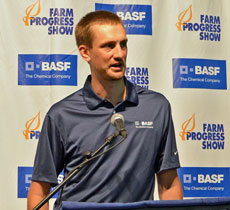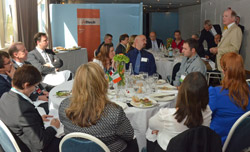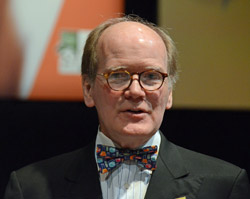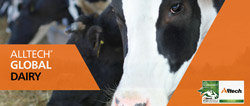 Livestock prices are up, but grain prices are down… that’s the good news, bad news for farmers this year. The latest report from the Food and Agricultural Policy Research Institute (FAPRI) at the University of Missouri says that while livestock producers are enjoying a complete reversal of fortune of not very long ago as prices for cattle, hogs and milk are at record highs this year, grain farmers (in many cases, one in the same as livestock producers) are seeing prices for their products drop.
Livestock prices are up, but grain prices are down… that’s the good news, bad news for farmers this year. The latest report from the Food and Agricultural Policy Research Institute (FAPRI) at the University of Missouri says that while livestock producers are enjoying a complete reversal of fortune of not very long ago as prices for cattle, hogs and milk are at record highs this year, grain farmers (in many cases, one in the same as livestock producers) are seeing prices for their products drop.
FAPRI says strong demand and easing feed prices are helping livestock producers, while at the same time, grain farmers and biodiesel and ethanol producers are being hurt by the government’s lack of a final decision on the U.S. Environmental Protection Agency (EPA) proposal to cut the amount of ethanol and biodiesel to be blended into the nation’s fuel supply:
· The potential for record corn and soybean crops has weighed on prices for grains and oilseeds. Corn and soybean prices for the crops harvested this fall could be the lowest since 2009.
· Corn prices fall to $3.89 per bushel for the 2014 crop. Even with a projected decline in 2015 U.S. corn production, prices remain around $4 per bushel in 2015 and beyond.
· Large U.S. and global supplies cause soybean prices to decline to $10.30 per bushel for the 2014 crop and below $10 per bushel for the crop harvested in 2015.
· Cotton prices have also declined sharply, partly in response to large Chinese and global cotton stocks. Farm prices for cotton drop to 65 cents per pound this year, and remain near that level.
· Ethanol production prospects depend, in part, on EPA decisions about how to implement the Renewable Fuel Standard (RFS). With lower prices, ethanol exports continue to increase in 2015.
· Reduced cattle numbers, animal disease problems and strong international demand are among the factors causing record cattle, hog and milk prices in 2014. Supply response to these high output prices and lower feed costs contribute to lower meat and dairy prices in 2015.
At the retail level, consumers did pay more for their groceries, fueled a large part by higher meat prices. But FAPRI analysts expect that inflationary rate to drop below 2 percent again in 2015.
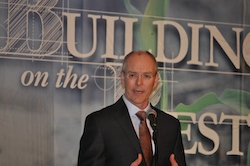 As of September 15, GROWMARK will have a new chief executive officer.
As of September 15, GROWMARK will have a new chief executive officer. 

